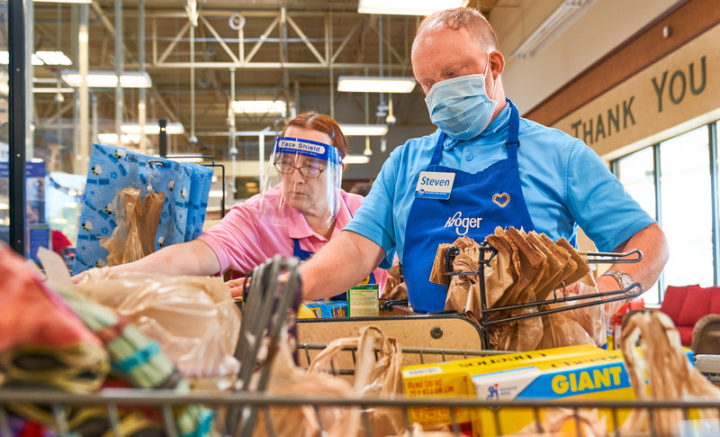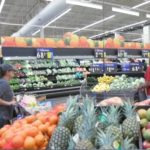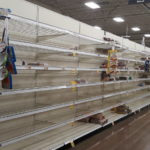
Grocery prices are declining, somewhat. Coupons and promotions are getting better, sort of. Grocery shoppers say they’re still spending more than they were before the coronavirus pandemic, but they’re not quite as anxious or upset about it as they were earlier this year.
That’s one of the main findings in a new survey of grocery shoppers. Each year, the Retail Feedback Group asks thousands of shoppers about their grocery shopping habits and their satisfaction with their grocery runs. But this year, which has been unlike any other, required two separate surveys to capture just how rapidly and acutely the grocery shopping experience has been changing.
In each survey, shoppers are asked to rate various store attributes, such as quality and freshness, store cleanliness, checkout speed and value for the money. The last survey, conducted earlier this year, found that every single attribute rated lower than it did last year at this time, before the pandemic, indicating that grocery shoppers were not all that impressed with the way their stores were handling the challenge.
The new followup survey, just released, found satisfaction scores have rebounded from their record lows. But they haven’t quite reached pre-pandemic levels.
Of all the attributes, “quality and freshness” ranked highest, with “value for money spent” languishing in last place. That said, value still saw one of the largest increases in satisfaction out of any category, though the increase still wasn’t enough to match the level it was at last year.
Earlier this year, of course, deals were a lot harder to come by. Some stores stopped printing weekly sales circulars for a time, and coupon distribution and redemption plummeted.
Now, shoppers are starting to look for deals again. More than two-thirds say they’re taking advantage of at least one money-saving method, compared to just over half who did so in the spring. 44% are clipping digital coupons, a ten-point surge over the spring, while 27% are using paper coupons, a slight increase over the 24% who did so earlier this year.
Deal-seeking has also become easier, in that promoted products are more likely to be on the shelves. More than three-quarters of all shoppers say their store had every item on their list the last time they shopped, as compared to less than half who said the same in the spring.
Many shoppers are still trying to minimize in-store shopping altogether, though. Half of all in-store shoppers are also occasionally ordering groceries online, about the same percentage as in the previous survey earlier this year. Older shoppers are more likely to have tried it in the spring but have since returned to in-store shopping, while younger shoppers apparently liked the experience and are ordering online even more now.
“With many shoppers continuing to shop online and in-store, supermarket retailers should continue to invest in both to remain relevant and attract new customers,” RFG Principal Brian Numainville said in a statement.
No matter where they shop, how often, or what they buy, about half of survey respondents say they’re still shopping less and spending more. That’s even though they profess to be more satisfied with their shopping experience – which indicates that, even though their groceries are costing more and the shopping experience is not the same as it used to be, shoppers are increasingly okay with that.
“While we saw a rebound for overall satisfaction, and across nearly all core experience factors, supermarkets need to weigh differentiators and how to leverage them in the current environment,” RFG Principal Doug Madenberg said. “In particular, a focus on providing good value for money spent remains a must, based on economic conditions.”
So the grocery shopping experience has gotten better over the course of the year. Or maybe we’re just getting used to the way it’s become. Either way, we can only hope that values, deals, safety and everything else about the reassuring routine of grocery shopping gets back to normal – or gets even better – in 2021.
Image source: Kroger










